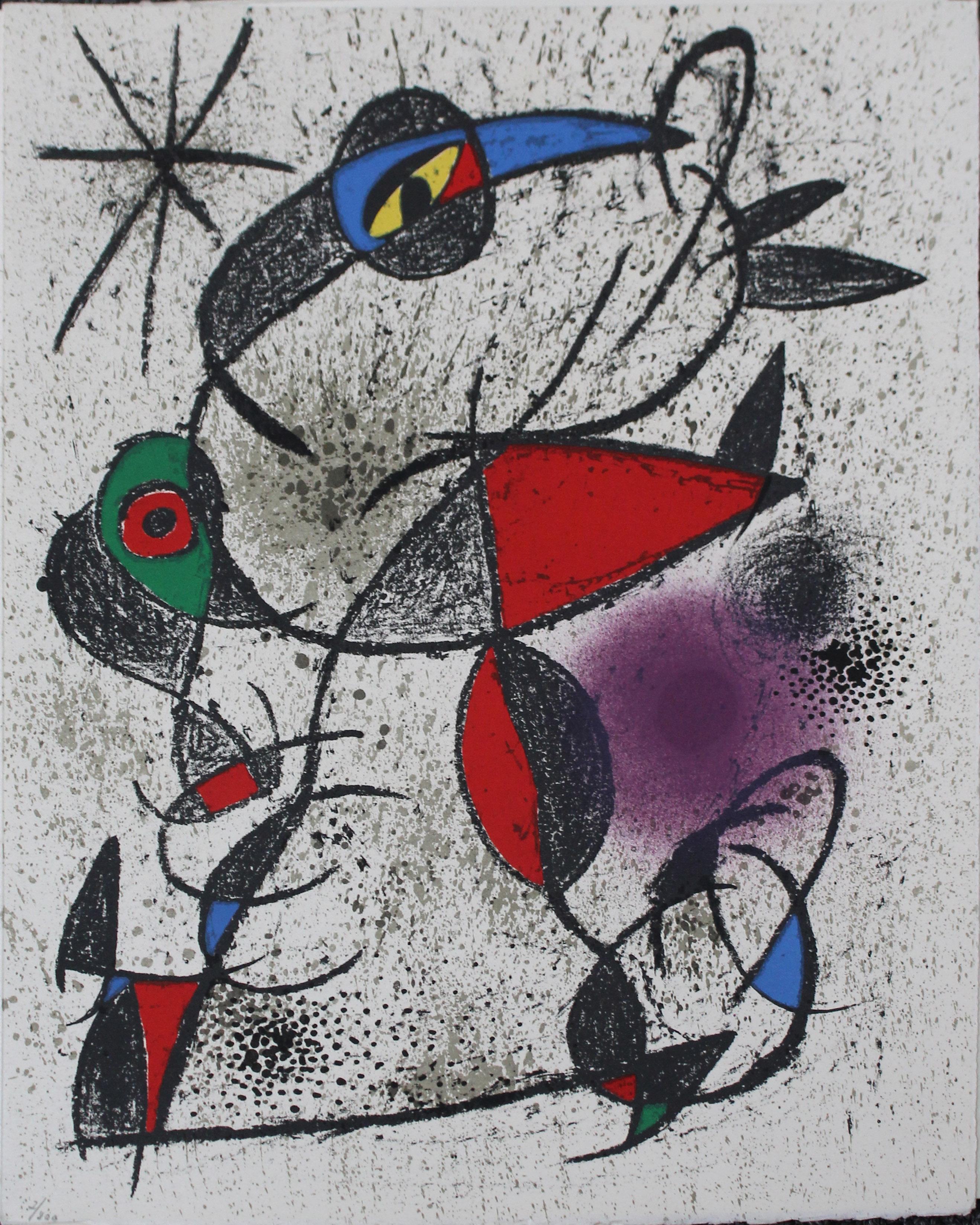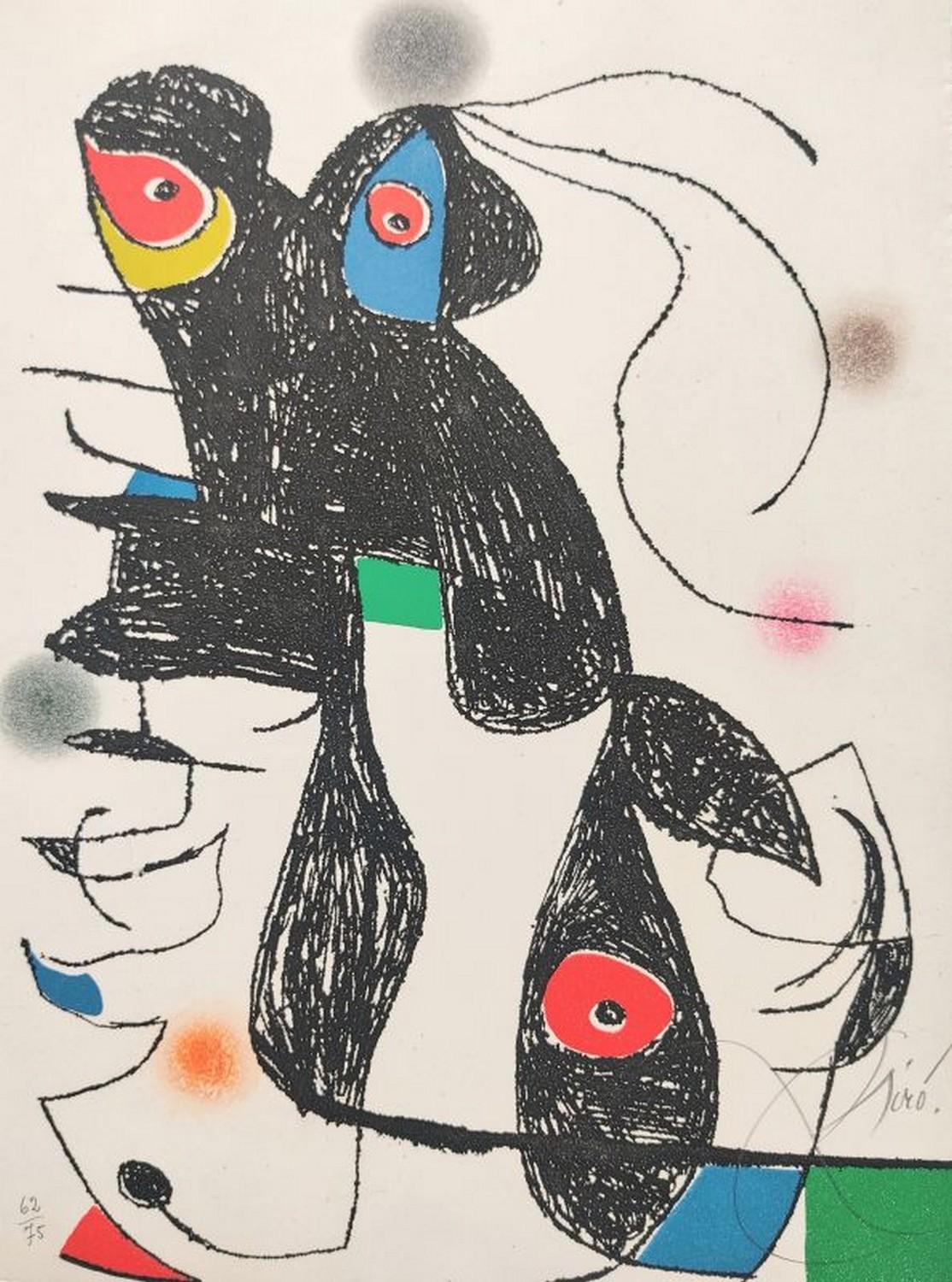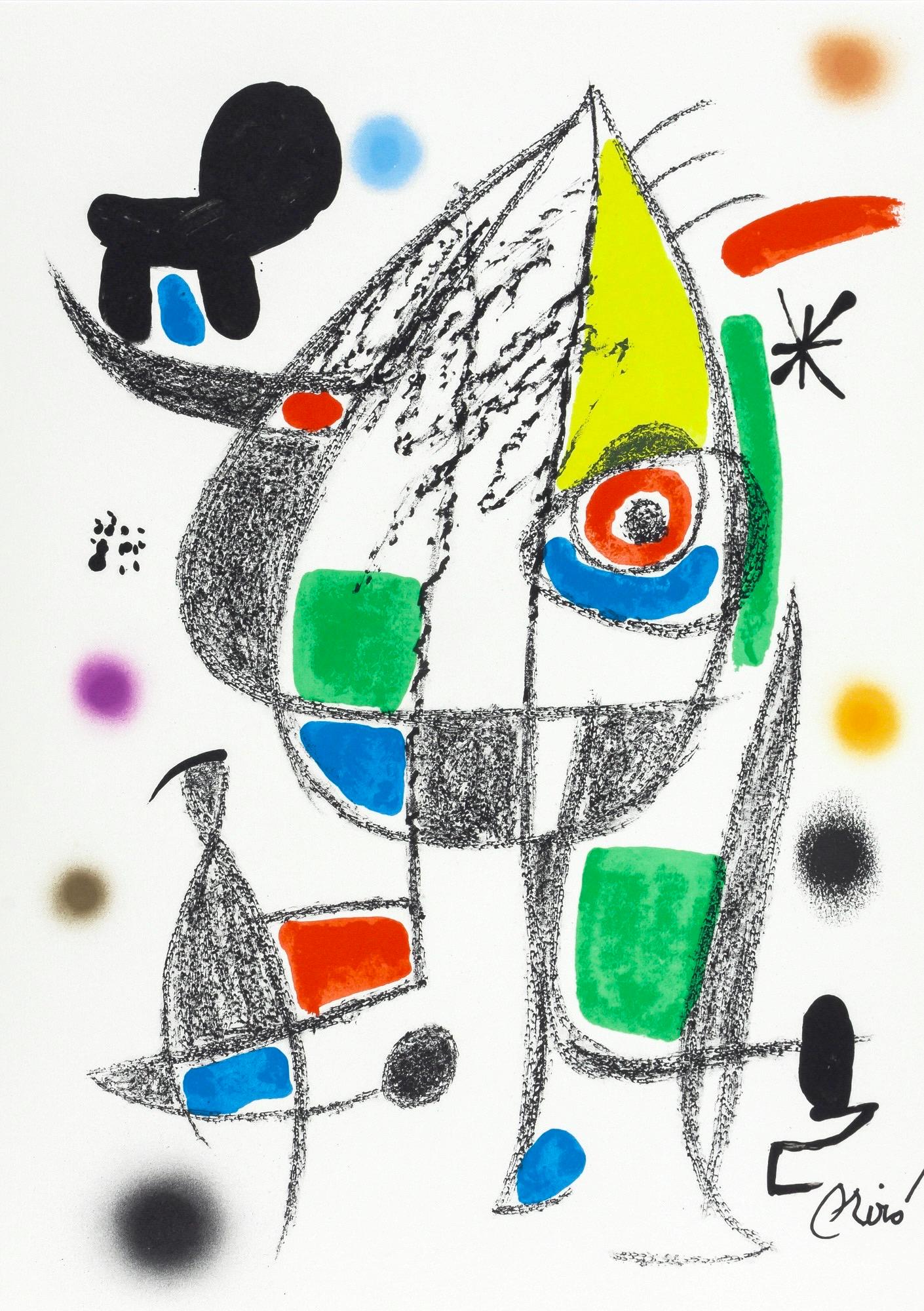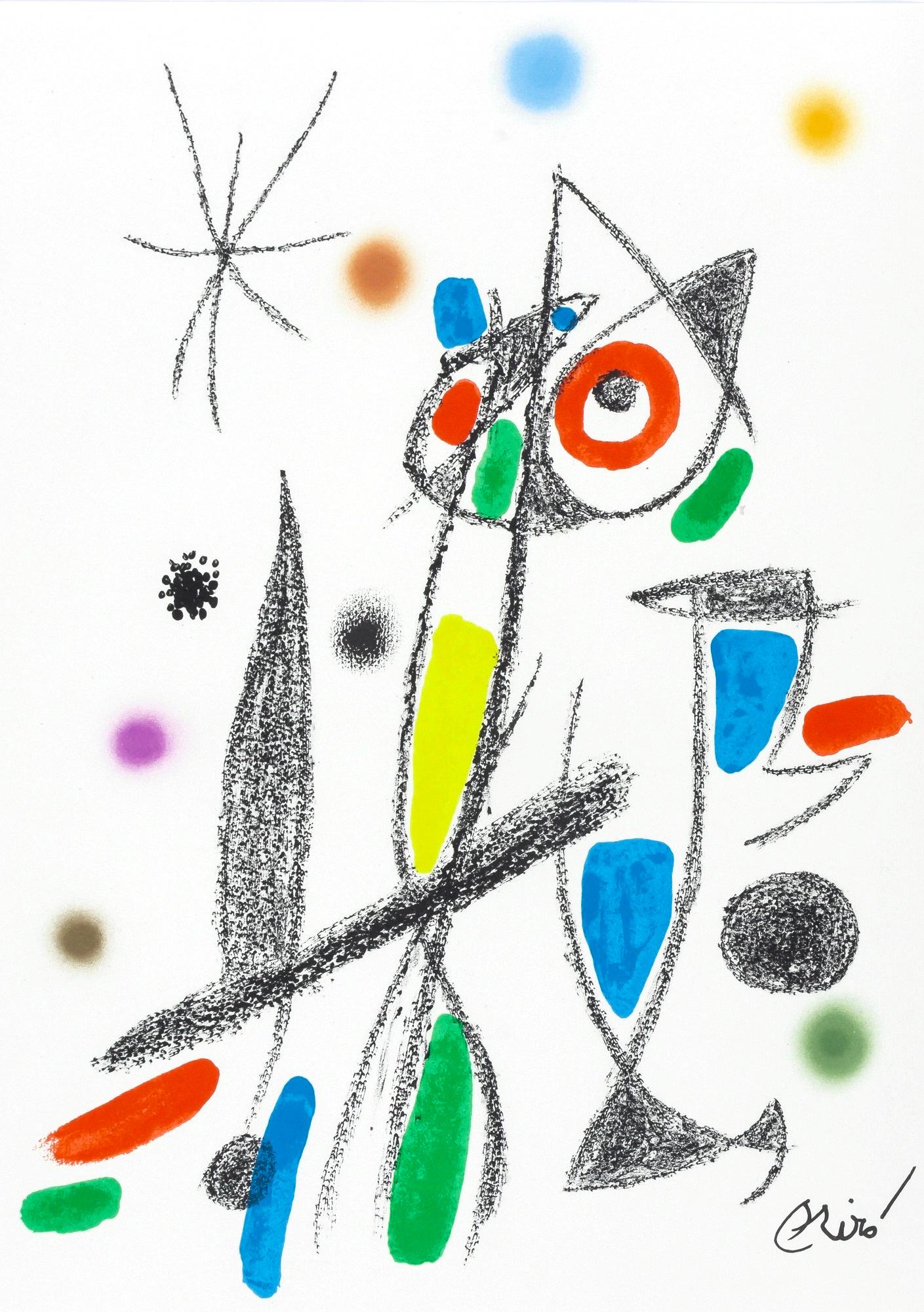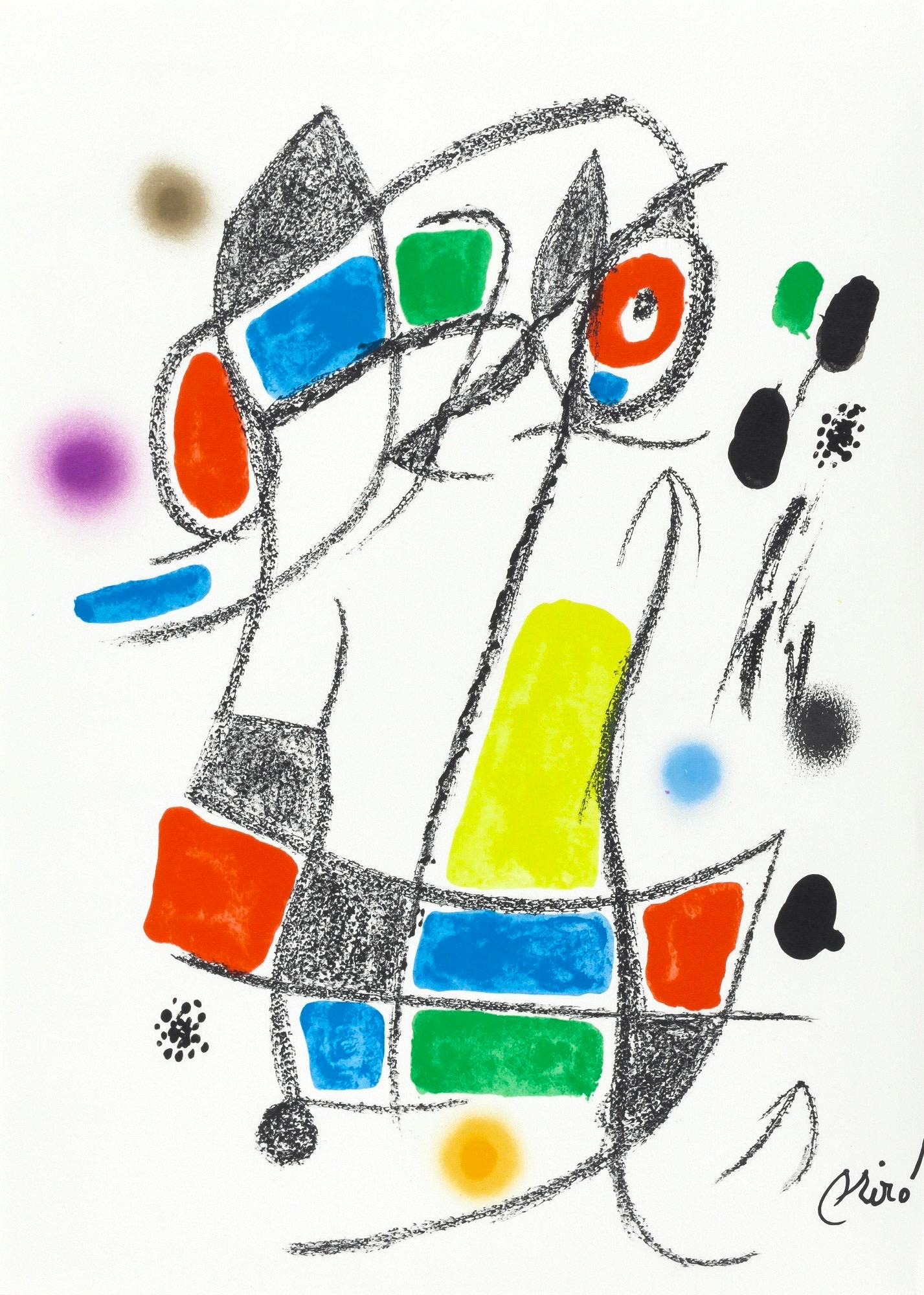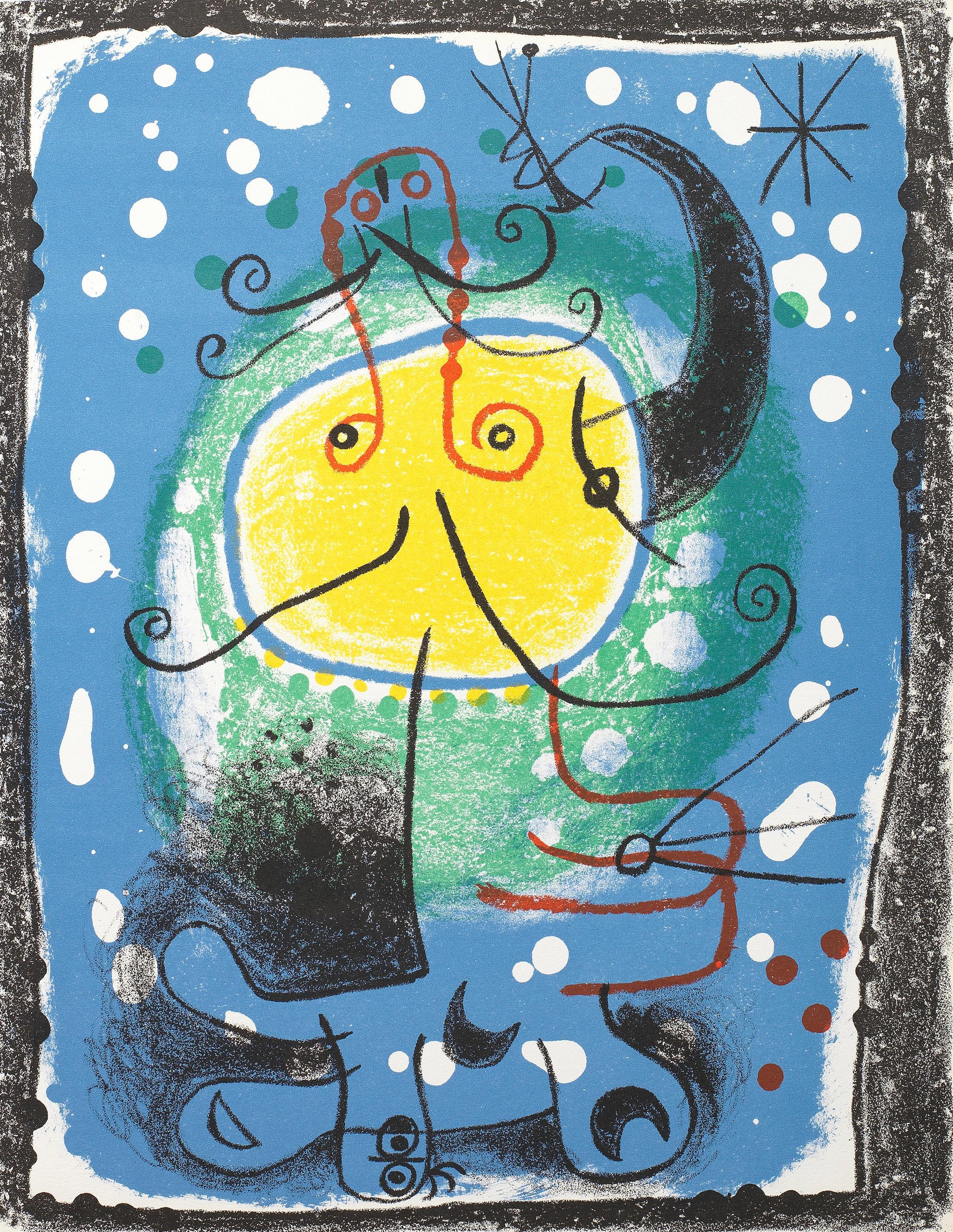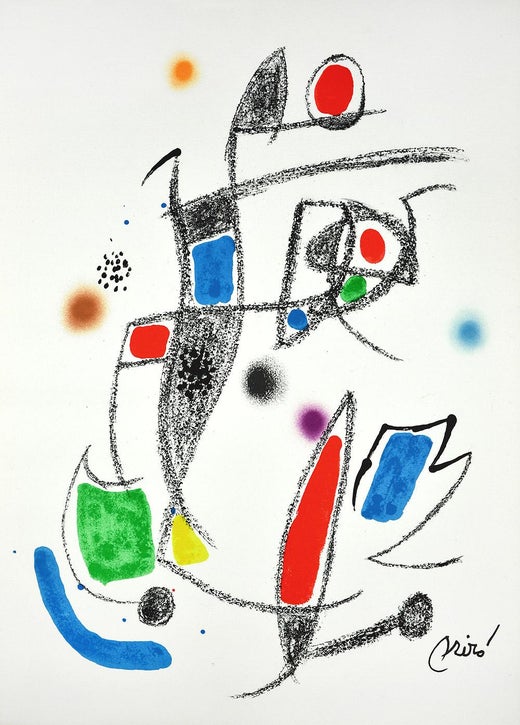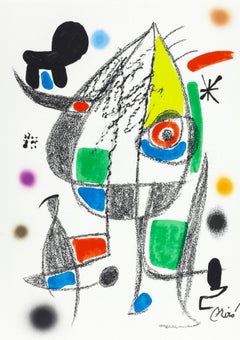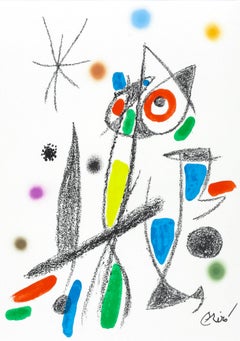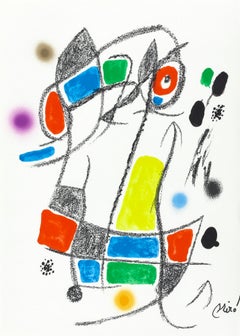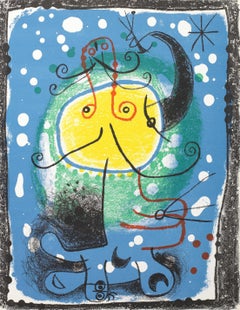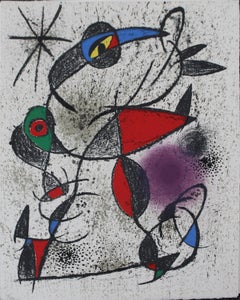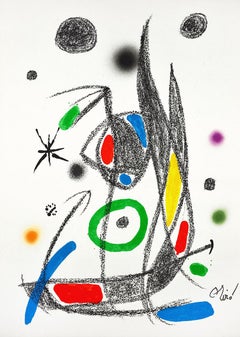This exquisite lithograph by Joan Miro (1893–1983), titled Faillie du calcaire (Limestone Fault), originates from the 1972 edition published by Editions A. C. Mazo et Cie., Paris, in collaboration with Leon Amiel, editeurs, New York, and printed by Mourlot Freres, Paris, April 5, 1972. This striking composition epitomizes Miro’s signature balance between spontaneity and structure, where vivid color, gestural rhythm, and organic form merge into a lyrical abstraction that defies convention. Faillie du calcaire reveals Miro’s fascination with the forces of nature and the textures of the earth, translating geological energy into a poetic symphony of shape and movement. The lithograph resonates with both primal energy and cosmic harmony, capturing the artist’s lifelong quest to express the invisible vitality that animates the natural world through color and form.
Executed as a lithograph on velin d’Arches paper, this work measures 12.81 x 9.81 inches (32.54 x 24.92 cm). Unsigned and unnumbered as issued. The edition exemplifies the masterful craftsmanship of the Mourlot Freres atelier, whose collaboration with Miro produced some of the most dynamic and technically accomplished lithographs of the 20th century.
Artwork Details:
Artist: Joan Miro (1893–1983)
Title: Faillie du calcaire (Limestone Fault), 1972
Medium: Lithograph on velin d’Arches paper
Dimensions: 12.81 x 9.81 inches (32.54 x 24.92 cm)
Inscription: Unsigned and unnumbered as issued
Date: 1972
Publisher: Editions A. C. Mazo et Cie., Paris, in collaboration with Leon Amiel, editeurs, New York
Printer: Mourlot Freres, Paris
Catalogue raisonne references: Cramer, Patrick, and Joan Miro. Joan Miro, Catalogue Raisonne Des Livres Illustres. P. Cramer, 1989, illustration 156. Miro, Joan, et al. Joan Miro Lithographe IV: 1969–1972. Maeght Editeur, 1981, illustration 850.
Condition: Well preserved, consistent with age and medium
Provenance: From the edition published by Editions A. C. Mazo et Cie., Paris, in collaboration with Leon Amiel, editeurs, New York, 1972
Notes:
Excerpted from the album (translated from French), This album is the album of friendship, and I want to thank all the artists who wanted to participate. Some lithographs presented here, and whose authors have left us for too long, were made at my request for an album "Adieu a la rue de Chabrol" that I intended to publish ten years ago. So it was at this time that I was able to get the lithos of Braque, Cocteau, Derain, Giacometti and Villon. Mrs. Duthuit-Matisse and her brothers authorized me to print the composition of Henri Matisse, an unused original lithograph of the album by Teriade "La Religieuse portugaise". I am happy to have brought together so many works by contemporary artists, it is a great honor for me and I am infinitely grateful to them. Finished printing in Paris on April 5, 1972, this album was printed on velin d’Arches, in DCCC numbered examples. In addition, a number of copies were printed for artists, friends and collaborators of this album. The original lithographs were printed by Mourlot, and the typography is from Fequet and Baudier. Alain A.C. Mazo, Paris, and Leon Amiel, New York, publishers.
About the Publication:
Souvenirs et Portraits d'Artistes (Memories and Portraits of Artists), published in 1972 by Editions A. C. Mazo et Cie., Paris, and Leon Amiel, New York, represents one of the most important collaborative projects of the modern printmaking era. Conceived as a tribute to friendship and creative alliance, the album gathered works by leading figures of the 20th century who had long been associated with the legendary printer Fernand Mourlot. Miro’s Faillie du calcaire exemplifies this spirit of collaboration, showcasing the artist’s gestural vitality and his mastery of lithographic technique. The publication serves as both an artistic document and a testament to the enduring creative community that defined postwar Paris—a union of visionaries, printers, and publishers who transformed the landscape of modern art through their shared devotion to beauty and experimentation.
About the Artist:
Joan Miro (1893–1983) was a Catalan painter, sculptor, printmaker, and ceramicist whose visionary imagination and lyrical abstraction made him one of the most influential and beloved artists of the 20th century. Born in Barcelona, Miro drew inspiration from Catalan folk art, Romanesque frescoes, and the luminous landscapes of Mont-roig del Camp, developing a deep connection to nature that infused his work with vitality and symbolism. After formal training at the Escola d'Art in Barcelona, he absorbed the lessons of Post-Impressionism and Cubism before moving to Paris in the early 1920s, where he became a leading figure in the Surrealist movement. There, Miro forged a personal visual language of biomorphic shapes, floating symbols, and radiant color harmonies that reflected both spontaneity and spiritual depth. In creative dialogue with peers such as Alexander Calder, Alberto Giacometti, Salvador Dali, Wassily Kandinsky, Marcel Duchamp, and Man Ray, he helped revolutionize modern art by dissolving the boundaries between abstraction and dream imagery. Miro's inventive approach extended far beyond painting, embracing sculpture, ceramics, and monumental public commissions that redefined how art could interact with space and emotion. His expressive freedom and gestural abstraction profoundly influenced later artists including Jackson Pollock, Mark Rothko, Alexander Calder, Jean Dubuffet, Antoni Tapies, and Joan Mitchell, inspiring generations who sought to merge instinct, color, and imagination. Today, Miro's work remains a cornerstone of modernism, prized by collectors and celebrated in major museums worldwide. His highest auction record was achieved by Peinture (Etoile Bleue) (1927), which sold for £23,561,250 (approximately $37 million) at Sotheby's, London, on June 19, 2012.
Joan Miro Faillie du calcaire, Miro Mourlot Freres, Miro Editions A. C. Mazo, Miro Leon Amiel, Miro 1972 lithograph, Miro velin, Miro collectible print, Miro modernist lithograph.
